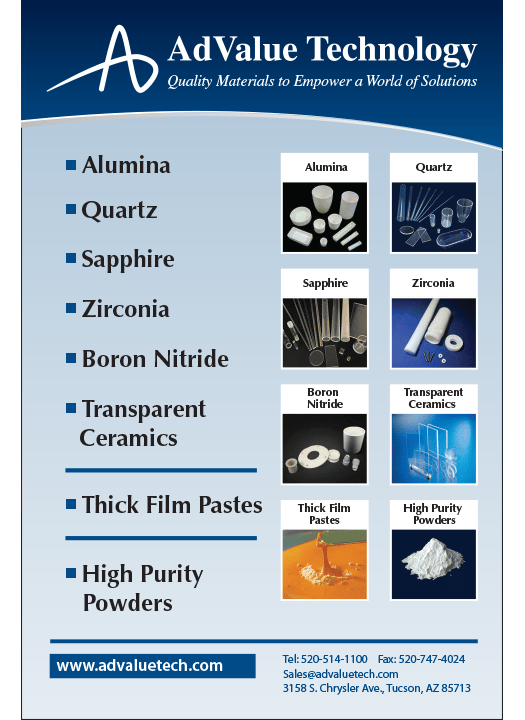news & trends
UK announces new plan, new partnership for semiconductor industry
With the drive toward electrification and data-centric processes in nearly every industry, demand for semiconductor chips grows louder by the day.
In the past year, the United States, the European Union, and India all released multibillion-dollar plans for bolstering domestic chip supply chains. The United Kingdom was expected to release a semiconductor strategy soon as well, but political instability led to a series of delays.
In May 2023, the United Kingdom finally announced its strategy, as well as a new Japanese partnership, for supporting the semiconductor industry.
UK announces new plan, new partnership for semiconductor industry
With the drive toward electrification and data-centric processes in nearly every industry, demand for semiconductor chips grows louder by the day.
In the past year, the United States, the European Union, and India all released multibillion-dollar plans for bolstering domestic chip supply chains. The United Kingdom was expected to release a semiconductor strategy soon as well, but political instability led to a series of delays.
In May 2023, the United Kingdom finally announced its strategy, as well as a new Japanese partnership, for supporting the semiconductor industry.
The Hiroshima Accord
On May 18, U.K. prime minister Rishi Sunak met with Japan prime minister Fumio Kishida to sign a new strategic partnership deal ahead of the G7 Summit. Dubbed the “Hiroshima Accord,” the deal aims to boost cooperation between the nations in a broad range of areas, including defense, clean energy, cybersecurity, and semiconductors.
Regarding semiconductors specifically, the countries will use the partnership “to explore ambitious joint research and development collaboration across semiconductor technologies, capitalizing on our respective strengths including in chip design, advanced packaging, compound semiconductors, and advanced materials,” as stated in the accord.
The Hiroshima Accord
On May 18, U.K. prime minister Rishi Sunak met with Japan prime minister Fumio Kishida to sign a new strategic partnership deal ahead of the G7 Summit. Dubbed the “Hiroshima Accord,” the deal aims to boost cooperation between the nations in a broad range of areas, including defense, clean energy, cybersecurity, and semiconductors.
Regarding semiconductors specifically, the countries will use the partnership “to explore ambitious joint research and development collaboration across semiconductor technologies, capitalizing on our respective strengths including in chip design, advanced packaging, compound semiconductors, and advanced materials,” as stated in the accord.
£1 billion semiconductor strategy ‘too little,’ according to industry
On May 19, the United Kingdom released its semiconductor strategy.
The National Semiconductor Strategy states that the U.K. government will invest up to £200 million (US$249 million) into the country’s semiconductor sector over the years 2023–25 and up to £1 billion (US$1.24 billion) in the next decade.
Instead of focusing on the construction of massive fabrication plants, the U.K. designed its strategy to focus on parts of the semiconductor industry that the country has expertise in, such as intellectual property and design of non-silicon chips.
So far, the strategy has received a cool reception from the U.K. semiconductor industry, with companies saying it will be too little to make a difference. As U.K. Shadow Secretary of State for Digital, Culture, Media, and Sport Lucy Powell points out in an article on The Guardian, “Rather than the £1bn headline, the reality is £200m over the next three years—significantly less ambition than our competitors.”
However, some companies say the plan is a good start because it “rightly focuses on the areas where the U.K. is a global leader,” as stated by Americo Lemos, chief executive of the compound semiconductor wafer manufacturer IQE, in a Financial Times article
The National Semiconductor Strategy is available at https://bit.ly/UKChipStrategy.
Cement Association of Canada takes concrete steps toward a net-zero cement and concrete industry
The Cement Association of Canada (CAC), which describes itself as “the voice of Canada’s cement industry,” represents five vertically integrated cement companies across Canada that are committed to helping Canadians build thriving, sustainable, and resilient communities.
In the past year, CAC’s advocacy work gained new prominence with the release of Canada’s 2030 Emissions Reduction Plan in March 2022. The 2030 Emissions Reduction Plan is the first of several emissions reduction plans to be issued under the Canadian Net-Zero Emissions Accountability Act.
This act, which became law in June 2021, codifies the government of Canada’s commitment to achieve net-zero greenhouse gas emissions by 2050. It requires that regular emissions reduction plans be developed to ensure that Canada achieves each of its five-year national emissions reduction targets. The first plan released in March describes the ongoing and planned actions that will help Canada reach its emissions reduction target of 40–45% below 2005 levels by 2030.
Upon the plan’s release, CAC announced that it looked forward to working with the federal government to achieve the plan’s goals. In August 2022, it confirmed this commitment by being the first to join Canada’s Net-Zero Challenge, which encourages businesses to develop and implement plans to transition their facilities and operations to net-zero emissions by 2050.
In November 2022, CAC and the government of Canada announced the release of the Roadmap to Net-Zero Carbon Concrete by 2050. The roadmap, which CAC helped develop, provides guidance on the technologies, tools, and policies needed for the Canadian cement industry to achieve net‑zero carbon emissions while remaining competitive in a global net-zero economy. It includes the near-term Action Plan to 2030, which addresses immediate efforts and lays out a plan for research and development projects to achieve the 2050 targets.
In May 2023, CAC released yet another document to support the success of these emission reduction plans. The Concrete Zero action plan, announced May 2, outlines five priority areas the cement and concrete industry will focus on to reach net zero. These areas are
- Eliminating use of coal and petroleum coke as fuel sources for clinker production while increasing the use of lower-carbon and alternative fuels.
- Reducing volume of clinker used to produce cement, which will achieve a 1.5 Mt CO2 emissions reduction over the course of the decade.
- Increasing the use of supplementary cementitious materials, such as fly ash.
- Ground limestone, recycled concrete fines, calcined clays, and other new promising materials will also play an important role.
- Working toward building carbon capture, utilization, and storage capacity. Part of that effort will be to build by 2030 North America’s first commercial deployment of a full-scale carbon capture and storage project at a cement plant.
- Advocating for performance-based codes, standards and specifications, procurement policies, and increased material efficiency in construction.
Australia announces National Electric Vehicle Strategy
In mid-April 2023, the Australian government released its National Electric Vehicle Strategy.
The strategy sets out three key objectives to support EV adoption:
- Increase supply of affordable and accessible electric vehicles;
- Establish the resources, systems, and infrastructure to enable rapid EV uptake; and
- Encourage increased EV demand.
These objectives will be funded largely through the Driving The Nation Fund, which is an ongoing government program developed to enable the demonstration and deployment of new zero-emissions vehicle technologies.

The Australian government is partnering with the Australian automobile association NRMA to build 117 new fast EV charging sites across the country.
Credit: Australian Government and NRMA
The three key elements of the Driving The Nation Fund are below. Monetary amounts are given in Australian dollars.
- The National EV Charging Network project aims to ensure a fast EV charger is available to drivers approximately every 150 kilometers (93 miles) on the national highways. The government is partnering with the Australian automobile association NRMA to build 117 new fast EV charging sites with $39.3 million in funding.
- The Hydrogen Highways project claims to help states and territories decarbonize heavy transport. Up to $10 million will be provided to all jurisdictions on a matched basis (up to $80 million total) to help industry fleets acquire heavy hydrogen fuel cell vehicles and construct renewable hydrogen refueling stations, located on major freight routes across Australia.
- Australian Renewable Energy Agency (ARENA) grants will provide more than $130 million to co-fund initiatives that will reduce Australia’s road transport emissions by improving access to advanced EV charging infrastructure. For example, grants are expected to deliver charging solutions for those living in apartment blocks or remote communities.
“EVs aren’t just for the cities, and Australians who drive long distances either for work or for holidays should be able to reap the benefits of cars that are cheaper and cleaner to run,” says Australian Minister for Climate Change and Energy Chris Bowen in a press release.
Learn more about the strategy.
AUGUST 2023 • VOL. 102, NO. 6


